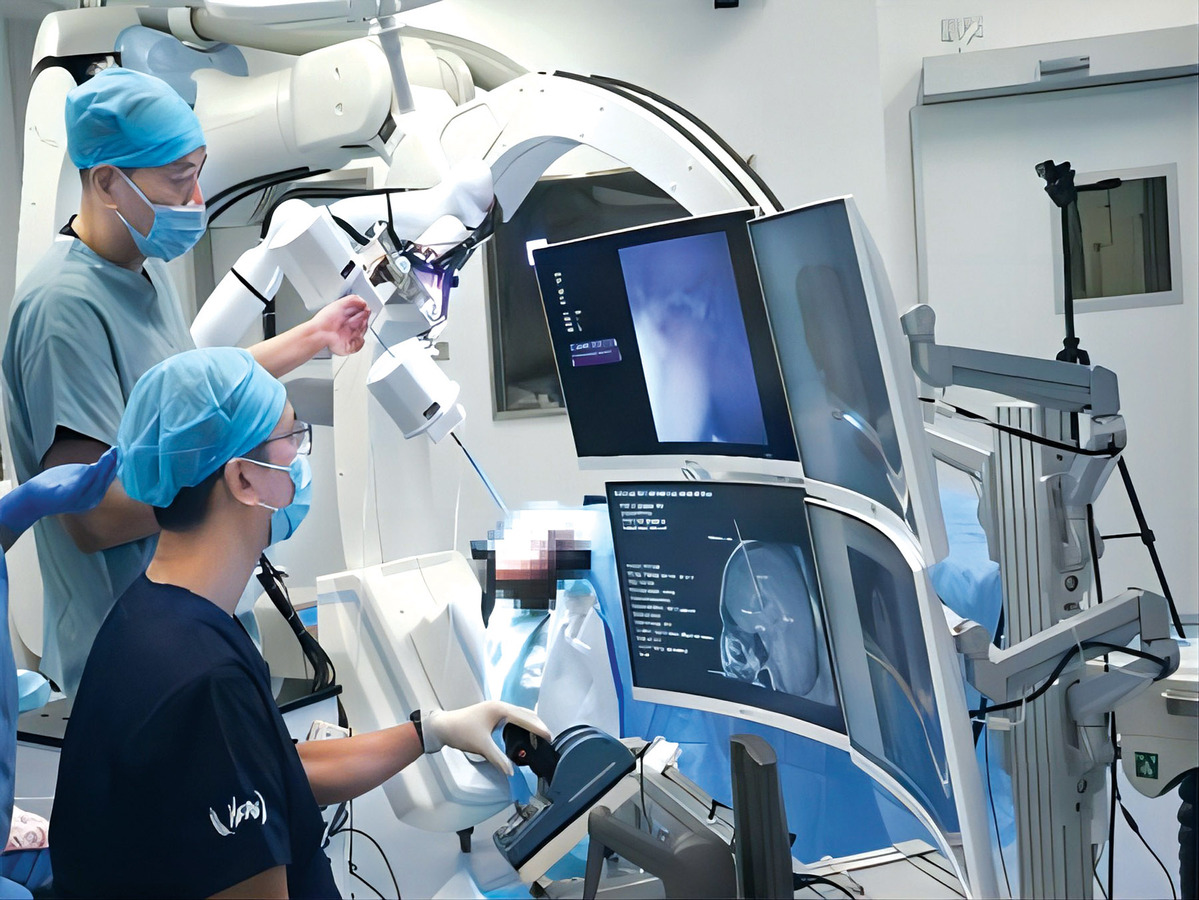Miracles in operation


Dual-endoscope system
MicroNeuro emerged from a critical need in neurosurgery. Standard 7-millimeter-diameter endoscopes, designed for bronchoscopy, proved dangerously large for brain surgery for which tools with a diameter of less than 4 mm are required. What's more, the tools have to accommodate camera, light and cannula systems to allow instruments for suction or biopsies.
Moreover, rigid endoscopes, with limited range of motion, require surgeons to manually adjust them to reach the lesion at the proper angle — an imprecise and hazardous process that could damage the brain and potentially lead to memory loss in patients.
MicroNeuro's dual-endoscope system uses a sheath endoscope to track the front endoscope's path. The system enables drainage and biopsy through a single entry, avoiding a second hole, which would involve removing healthy brain tissue to clear a surgical path.
With MicroNeuro, one surgeon alone could complete the surgery, which traditionally is a two-man job. Following cadaver trials in 2022, human clinical trials are planned for 2027.
Liu admits that commercializing a complete MicroNeuro system remains challenging. To accelerate adoption, his team is unbundling it into modular components.
This month, they will launch a stand-alone hand-held version of the flexible endoscope, slated for commercialization next year. Similarly, the Copilot 2.0 will be marketed separately.
With such a device typically priced at HK$3 million ($382,000), the Copilot 2.0 is priced at HK$300,000. Hospitals in Beijing and Guangdong have expressed interest.
The Copilot AI system, adaptable to other robots, requires partnerships with device makers and retraining for new applications.























